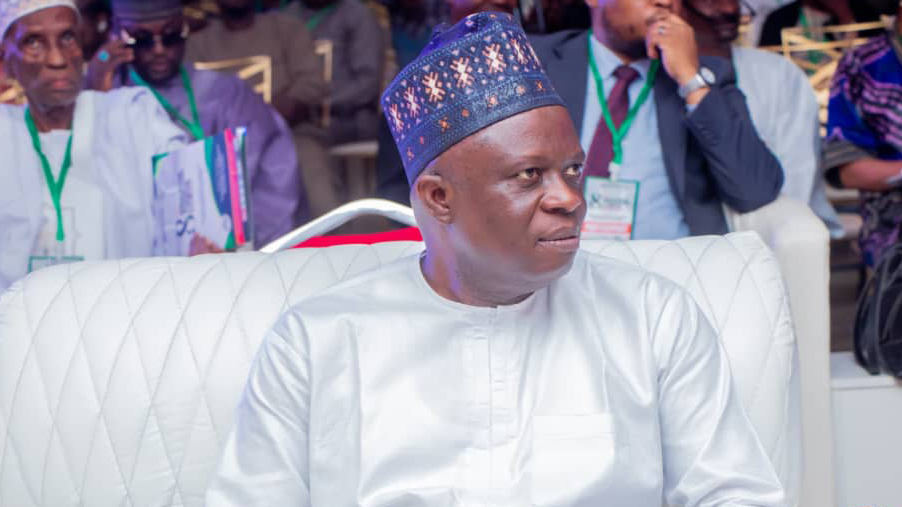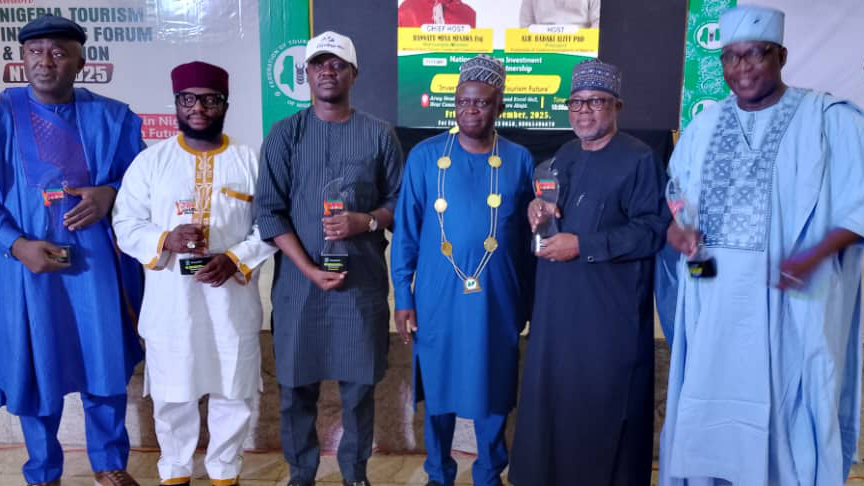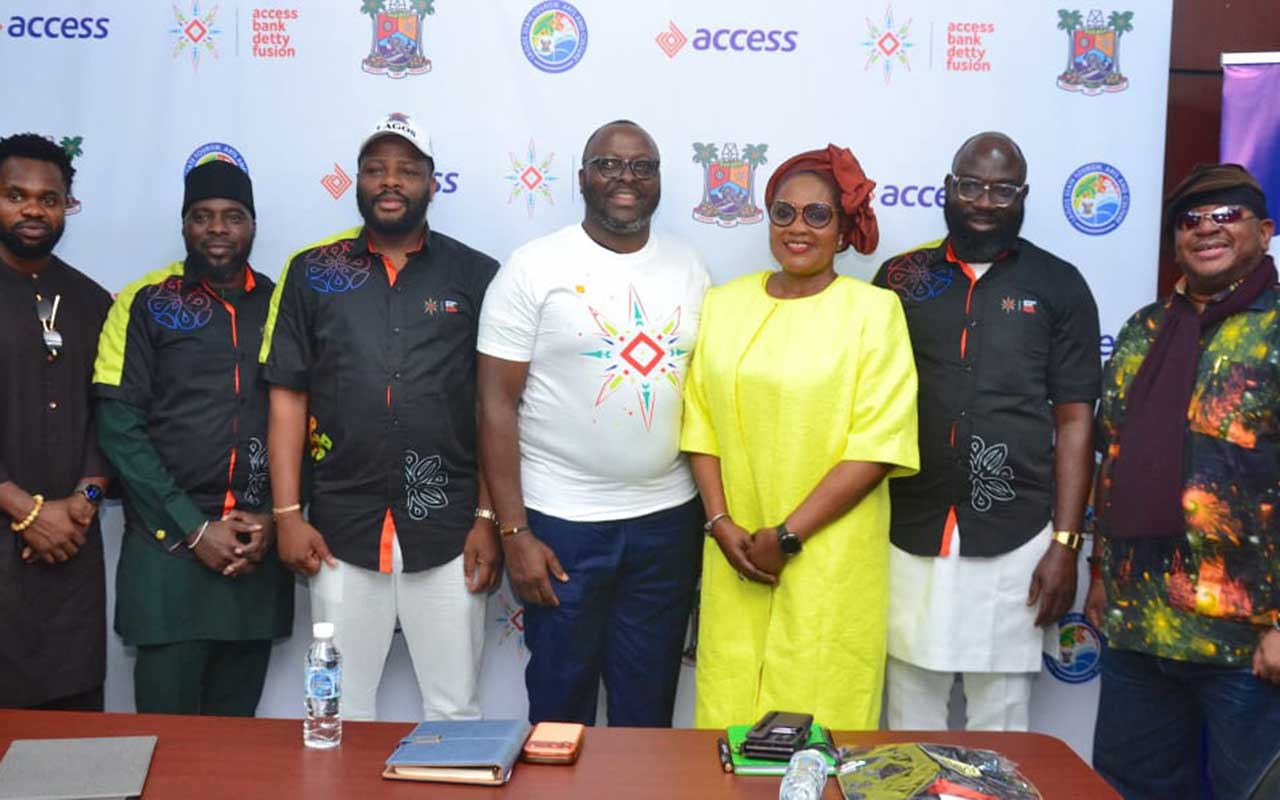As Nigeria joins the world to mark the World Tourism Day 2025, the theme of systemic and sustainable transformation resonates strongly. With over 1,091 tourist sites spread across the 36 states and the Federal Capital Territory, and the sector already supporting some 1.9 million jobs, tourism is no longer just an aspirational sector but a key lever for economic diversification, local job creation and cultural expression. Recent government pronouncements indicate a growing recognition of sector’s potential. However, industry watchers are worried that the structures in place are not adequate, maintenance culture is bad and policy inconsistency have made tourism sector a yawning gap in Nigeria’s economic drive, GBENGA SALAU writes.
Iyake Lake is a suspended lake located atop the Oke Ado Mountain in Ado-Awaye town of Oyo State, Nigeria. It is a natural wonder that residents and indigenes of Ado-Awaye are proud of, because it is one of the two recognised suspended lakes in the world, the other being the Hanging Lake in Colorado, USA.
Over the years, successive governments have not done much to maximise the economic values of such a tourism attraction.
A community leader in Ado-Awaye, Pa Nasiru Oladokun disclosed that since the emergence of democracy, it is only the administration of Lam Adeshina that made efforts to make the lake a bit attractive to tourists who visit the community.
According to him, the community is disappointed that it has been just promises these years.
He said this is why a number of the residents are not happy. He said the community understands the lake’s potential as a revenue generator that the community sometime ago constructed stairs to take visitors to the top of the mountain. Unfortunately, the concrete staircases constructed by the community have been washed away.
Oladokun, like many others, is of the opinion that if the suspended lake is well packaged and marketed, it will not only benefit the community but the state.
He, therefore, pleaded with the state government and concerned private sectors to come to the aid of the community as it sees it as a tool to economically engage its youths, women and other residents.
But it is not only the Iyake Lake, in Oyo State that is unattended to by government whether at local or state level.
The Argungu festival, one of the viable tourism products that contributed to the national economy, attracted more than 500,000 visitors yearly to the state from within and outside the country.
In addition to the enormous economic value that diverse inter-connected activities constituted, the standard of living in Argungu town and its environs received a lift albeit temporarily.
Indeed, it was its beauty and contributions to the socio-economic development of the state that led to its being listed as an Intangible Cultural Heritage of Humanity by the United Nations Educational, Scientific and Cultural Organisation (UNESCO), in 2016.
Unfortunately, the festival, which made it to the global tourism calendar, was suspended for about a decade over insecurity in the region.
The last edition was held in 2020 after a 10-year hiatus even as the present state government has disclosed plans to revive it as “insecurity is being mitigated in the state.”
The zeal and appetite of locals to visit these enchanting sites, beautiful landscapes, and cultural festivals also get eclipsed by safety concerns. Furthermore, while international tourists become increasingly sceptical and apprehensive about travelling to Nigeria, their domestic counterparts see no need to embark on journeys that do not guarantee a safe return.
From Idanre Hills to Yankari Game Reserve, the ancient Osun Osogbo Sacred Grove to colonial architecture in Lagos, the potential for tourism is vast. Yet, many of these sites have decayed or faded under neglect, inadequate preservation, weak infrastructure, and inconsistent governance.
Idanre Hills, once a marquee attraction drawing visitors from home and abroad, has become emblematic of the crisis.
Recently described as “an eyesore to the locals and irritatingly unattractive to foreigners,” the hills, steeped in myth and geological wonder, are losing their appeal not through lack of natural splendour, but because of poor infrastructure and mismanagement. Rest houses and tourist friendly facilities built at the foot of the hills have been allowed to degrade, while key efforts to conserve the traditional structures and paths have been neglected.
Similarly, a lot of Nigeria’s heritage buildings and relics, both colonial and indigenous, are deteriorating. In Lagos State, a study found that five out of eight heritage buildings surveyed were in poor physical and functional condition. The cause is almost same; lack of ongoing maintenance, insufficient funding, and weak enforcement of protective laws, poor physical planning, and a shortage of skilled artisans to carry out conservation work.
Also, recently, a visitor to the Erin-Ijesha Waterfalls in Osun State expressed disappointment over the state of disrepair, citing lack of maintenance.
Sharing the video on Facebook, Prince Isaac Fayose wrote: “Erin-Ijesha Waterfalls. What a shame. A poor state like Osun, sitting on a potential money earner has decided to abandon this in favour of almighty federal allocation. I am sorry to be very emotional about this. I think it is a real shame that people will come here and disrespect our heritage like this. They are literarily defecating on us, urinating on us. They are literarily destroying our heritage and we look on because we collect peanuts. I think it’s a real shame.”
An indigene of the community, Ola Oluwasayo, said: “Erin Ijesha Waterfalls is beautiful, people still come, but the state cannot see the opportunities. Paths are dangerous, there are no quality lodging, no organised tours, or good marketing. The governor promised large sums, but nothing has changed. If this place had been properly managed, tourists would stay longer, spend money here and employ locals. Instead, it’s left to nature, and decay.”
Also, Osun State does not have an airport, which implies many of its local and foreign tourists will connect Erin-Ijesha through land, yet the main road linking the community from major cities like Lagos and Ibadan, the Ibadan-Ife-Ede road is highly dilapidated.
Aside from Erin-Ijesha Waterfalls, Osun State has other tourist sites such as the Osun Groove, Owala Inland Beach Resort in Olorunda Local Council; Sango Timi Shrine in Ede Council; Ayunkunnugba Waterfalls in Oke-Ila Orangun, in Ifedayo Local Council and other cultural sites, which are also not doing well and plagued by same issue as Erin-Ijesha Waterfalls.
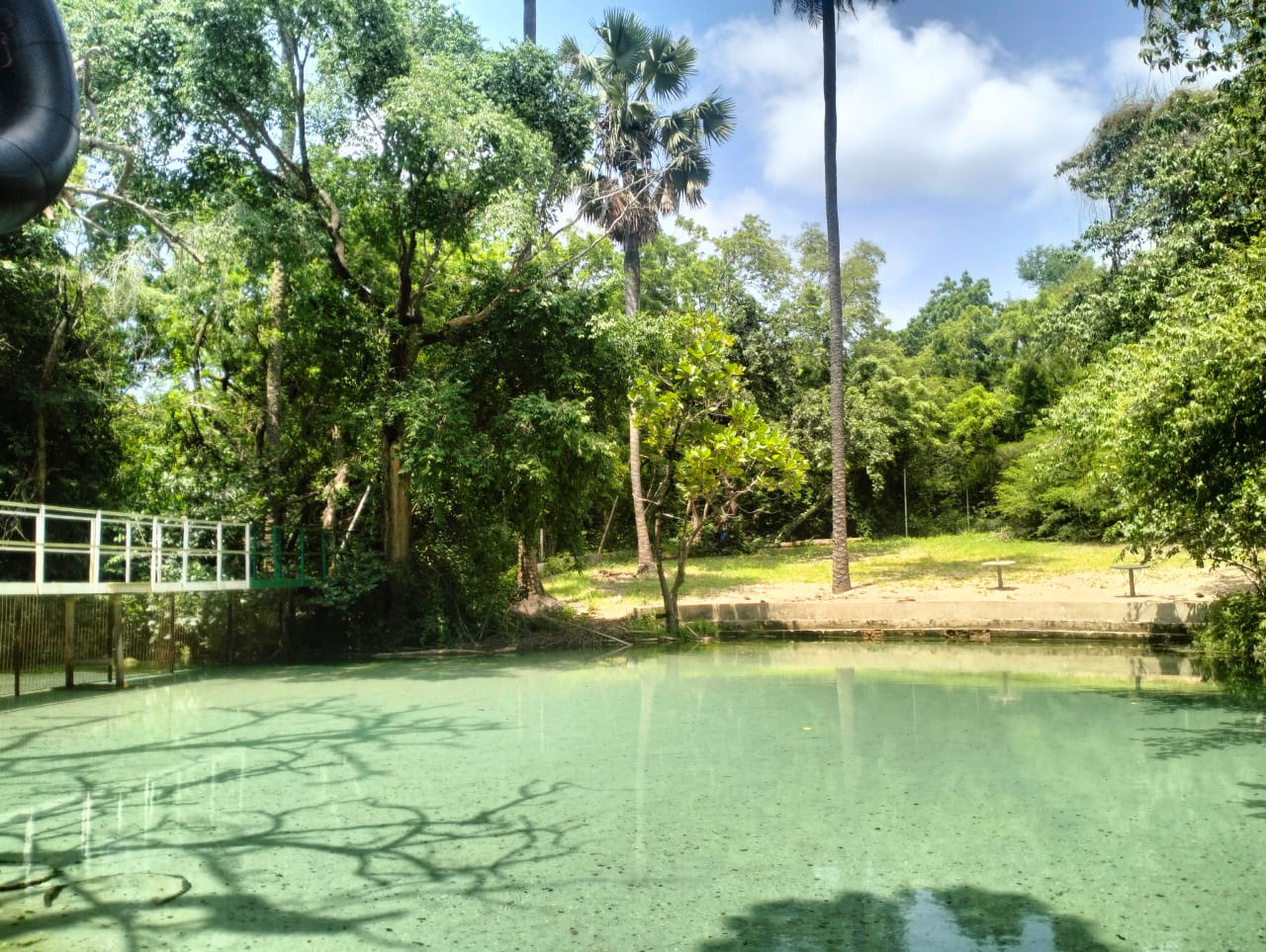
Yet, the failure to preserve relics translates into heavy economic losses. Experts estimate that Nigeria loses hundreds of millions of dollars yearly because destination brands, monuments, and heritage sites are not used or developed to their potential.
The Yankari Game Reserve is one of Africa’s biggest and premiere games reserves. This tourist’s delight is strategically placed to serve as a revenue booster to the state.
In the early 50s to 60s, it was learnt that the Yankari served as a major revenue source and source of employment for Bauchi State.
It was the only industry that had the ability to take care of itself without government support. Unfortunately, today, it has been neglected due to insecurity, low patronage and epileptic power supply. There are a number of attractions for tourists and holidaymakers at the Yankari Game Reserve.
Despite its potential and alluring attractions, the Yankari Game Reserve had faced severe threats and neglect over time.
In June 1999, the government of Chief Olusegun Obasanjo established the Federal Ministry of Culture and Tourism in Nigeria basically to promote cultural heritage: Identify, develop, and market Nigeria’s cultural and tourism potential.
Subsequently, it was renamed the Federal Ministry of Tourism, Culture and National Orientation in 2006. In 2015, it was merged with the Ministry of Information, creating the Ministry of Information, Culture and Tourism. More recently, the ministry was restructured into the Ministry of Art, Culture, Tourism and the Creative Economy (FMACCE) to focus on developing Nigeria’s creative sector and its cultural heritage.
Tourism in Nigeria has failed to realise its potential since 1999 owing to widespread insecurity, corruption, poor infrastructure, inadequate policy implementation, and a continued over-reliance on oil revenue, which has diverted attention and resources from diversifying the economy through sectors like tourism.
These persistent challenges have led to undeveloped tourist sites, a poor international image, and a lack of effective tourism products and services.
Speaking recently at a tourism event in Ogun State, Founder, Omooba Yemisi Adedoyin Shyllon Art Foundation (OYASAF), Prince Yemisi Shyllon, said over $300m was being lost yearly to negligence of tourism centres, reason he said stakeholders in the sector must utilise their image-making power to promote art and culture, as well as tourism, for economic development of the country.
Shyllon further said that in Ogun State, there are 71 tourist attraction centres that were underutilised, underscoring the need to develop the state’s unlocked tourism potential so as to generate more revenue. He also suggested inculcating cultures, and moral values in pupils, as kids should be allowed to speak their local dialects, specially Yoruba language, without hesitation anywhere.
Underlying many of these tourism losses is weak coordination and policy failure. Even when sites are listed on Nigeria’s tourist registers, or nominated for UNESCO status, the lack of follow through, budgetary allocations and community inclusion often means that the legal protections on paper do not translate into real preservation on the ground.
This is why some experts warn that Nigeria may risk losing its existing UNESCO World Heritage Site status for Osun Osogbo or Sukur if maintenance and management do not improve.
Urban expansion adds another layer of threat. Historic neighbourhoods and natural heritage zones are being encroached upon by development — roads, flyovers, real estate projects — that often proceeds without adequate regard to heritage conservation.
In many cases, structures are torn down, traditional architectural styles lost, green buffer zones removed, or natural landscapes degraded by unplanned construction.
While there are efforts to revitalise many sites under federal programmes, such as the assertion that 1,091 tourist sites are being targeted for improvement, these remain patchy. The scope of revitalisation often does not match the scale of decay, and many sites continue to suffer from basic deficiencies like poor access roads, irregular electricity, lack of water and sanitation, minimal signage, weak visitor management, and low levels of security.
Yet many of the countries who do not have the assorted tourist sites of Nigeria are benefiting hugely from tourism revenue.
One of such countries is Kenya with the country’s National Bureau of Statistics reporting that tourist arrivals rose by 2.3 percent in the first five months of 2025.
Also, while an estimated 1.4 billion international tourists, overnight visitors, were recorded around the world in 2024, an increase of 11 per cent over 2023, or 140 million more. In the same year, the African continent welcomed 74 million visitors, marking a 7 per cent increase compared to 2019 and a 12 per cent rise from 2023, according to United Nations Tourism.
By market share, this accounts for 5.3 per cent of global arrivals. In 2024, Kenya experienced a notable increase in international tourist arrivals, welcoming 2,394,376 visitors compared to 2,089,259 in 2023.This represents a growth of 14.6 per cent.
The inbound tourism earnings increased to Kshs. 452.20 billion in the year 2024 compared to Kshs. 377.49 billion in 2023 translating to a growth of 19.79 per cent. The significant improvement in tourist arrivals, according to the Tourism Research Institute of Kenya, can be largely attributed to key strategic interventions, including Electronic Travel Authorization (ETA), aggressive marketing, enhanced tourism product diversification, and adoption of digital platforms such as smart booking platforms and targeted online promotions, which have optimised the visitor experience.
Worthy to mention is that as of 2024, Nigeria has only two UNESCO World Heritage Sites, despite having at least 65 monuments already identified by the National Commission for Museums and Monuments (NCMM) as being worthy of consideration.
But infrastructure deficits, weak promotion, seasonal visibility of certain festivals, environmental threats, and security concerns continue to limit how fully the UNESCO support is translated into consistent economic and social benefits.
Commenting, a Professor of Hospitality Management in the Department of Hospitality and Tourism Management, Imo State University, Owerri, Polycarp A. Igbojekwe, agreed that Nigeria is endowed with a lot of tourism potential and most of them are domiciled in the rural/local communities.
He added that if this potential is harnessed adequately through good governance structure, well planned and implemented tourism policies, sustainable tourism, economic, and socio-cultural transformations could be achieved.
“Unfortunately, these benefits of tourism are eluding Nigeria because of the governments’ (federal, State, local) inability to play their roles as a result of bad/poor governance structure.
“The government plays a crucial role in sustainable tourism by providing infrastructure, establishing protective policies for the environment and cultural heritage, empowering local communities to benefit from tourism, and implementing effective management and planning strategies to balance economic, social, and environmental needs. Governments foster sustainable tourism by acting as facilitators, regulators, and partners to ensure long-term benefits for both visitors and host communities.”
Quoting Nigeria’s 1990 National Tourism Policy, Igbojekwe said local councils were tasked with identifying and developing local tourist attractions, establishing tourism committees to manage these sites, acting as information centres for visitors, preserving local museums, promoting security and hospitality, encouraging cultural activities, and fostering small-scale enterprises for arts, crafts, and souvenirs. “This is in line with the UNWTO’s sustainability principles, which recognise the need to empower and involve local communities in the planning, management and marketing of tourism. Also, the current governance structure has produced unstable, weak regulatory institutions and policies due to “cachistocracy”. This political system is described by some as a government run by the least capable citizens. It is often dominated by individuals who gain power through patronage rather than competence, leading to poor leadership.
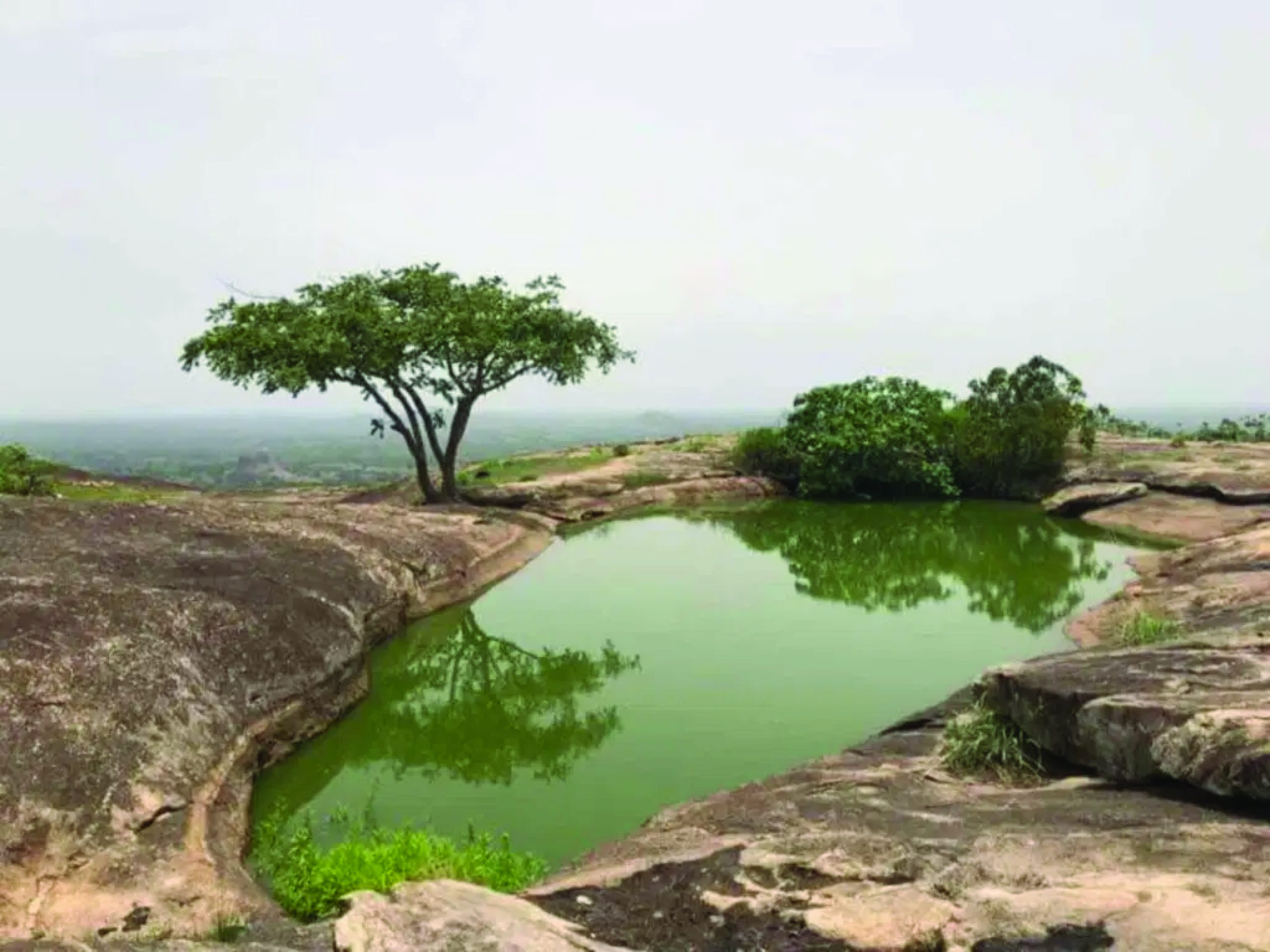
“For example, in Nigeria, professionals are not considerably involved in the formulation, planning, implementation and monitoring of tourism policies; and those whose policies are made for and the experts in the field are not incorporated in the process. Thus, tourism has become all-comers affair. Over the years non-professionals who lack knowledge of the technicalities of tourism have been appointed as Directors General by the Federal government to head the tourism ministries, boards, NTDC, and NTDA. Also happening is wrong assignment of responsibilities and allocation of power and authority. Currently, NIHOTOURS, a training institution, is assigned regulatory functions.”
Igbojekwe also said another issue confronting the tourism industry in Nigeria is insecurity especially at the local communities where the tourism resources are located.
He added that as a result of insecurity local councils are not able to confront the situation owing to lack of manpower and resources, coupled with centralised police force.
“The Federal Government controls the police force, resulting in an ineffective and underfunded system that struggles to address localized security threats like insurgency and banditry. State governors, who are nominally the chief security officers of their states, have limited authority over police activities. This challenge can be mitigated by institutionalizing community policing.
“The current governance structure has also produced varied adoption of sustainability among governments (federal, state and local) and regulatory agencies. Drivers of sustainability adoption include strong and stable regulatory policy, enforcement and legal compliance. When these drivers interact effectively, positive results in terms of sustainability would be achieved. But unfortunately, the poor governance structure has compromised sustainability principles and consequently, sustainability adoption has been observed to be lowest at the local government level.”
“The theme for this year’s World Tourism Day celebration is Tourism and Sustainable Transformation. By implication it is expected that tourism would transform both the developed and developing countries. The much expected transformation would elude Nigeria unless the Nigerian state cures itself of the anomalies of weak institutions and policies, and install appropriate structure where the various stakeholders, leaders and the led would imbibe the ethos of good governance, and adopt sustainability, it will continue to struggle with the challenges of poor governance and the concomitant lack of social development it breeds in the society.”
As a way forward, Igbojekwe said the three levels of government must ensure that local communities are actively involved in tourism planning and decision-making processes to build support and achieve sustainability in the tourism sector.
“Furthermore, governments (federal, state) must work collaboratively with local authorities, tourism businesses, and community groups to implement sustainable tourism initiatives effectively. Involvement and empowerment of local community can create conditions that support the growth of tourism friendly environment and provide continued economic and social benefits in the villages.”
Similarly, a Professor of Sustainable Tourism Management in the Department of Hospitality and Tourism Management, Redeemer’s University, Ede, Osun State, Bola Adeleke, noted that Nigeria, like most other developing countries in the world, has world-class attraction sites suit for tourism like beaches, ancient and natural heritages but unfortunately Nigeria receives a small fraction of global tourism.
“Why because of the underutilisation of tourism in Nigeria.”
She attributed it to several challenges that include infrastructure deficit, limited marketing, political instability, and poor governance.
Adeleke stated that for Nigeria to deploy tourism for sustainable transformation, it requires deliberate strategies, emphasising sustainability and inclusivity. “I will suggest intentional tourism framework and investment policy to improve access and quality. We need to build eco-friendly infrastructure, train local tourism workers and be intentional about community-based projects. Tourism has the potential to be transformative for all developing countries like Nigeria and we can leverage it for economic diversification and social progress. We must be intentional about our community based tourism ensuring that economic benefits reach the grassroots, thereby helping eliminating poverty and fostering inclusive growth.”
Adeleke stated that though Nigeria has made some move in aligning with international policies and frameworks like SDG and UNESCO, but transparency and inclusiveness of the process is still so much in doubt. Nigeria has made moves but the transparency around the move leaves some gaps as we have had some systemic challenges such as poor coordination, little or no public awareness of what government is doing, corruption, just as unskilled labour have limited the effect of the alignment.”
On her part, a Professor of Tourism and Hospitality Management in the Faculty of Renewable Natural Resources, University of Ibadan, Oyo State, Funmilola Ajani, stated that though Nigeria has had some successes in leveraging UNESCO’s programmes for culture and tourism development, but overall the evidence suggests that the country has not yet fully or adequately taken advantage of what UNESCO offers. “Nigeria, so far has two UNESCO sites and these are Sukur Cultural Landscape in Adamawa State and Osun-Osogbo Sacred Grove in Osun State. These sites have garnered international recognition and some support, which in principle helps with conservation, visibility and potentially to a reasonable extent, they have been able to portray Nigeria in a good light.
“But we still have some other potential sites, which can be certified as UNESCO World Heritage Sites in Nigeria, but we need to work on these sites so that they will come up to the standard of a UNESCO World Heritage sites,” Ajani observed.
Adeleke argued that though some states like Lagos Cross River and Osun have made efforts in promoting tourism and cultural heritage but the effectiveness of community involvement in this process is limited. “For tourism to be effective, there must be a policy that takes it to the grassroots. If it does not get to the grassroots, it is not tourism because it is highly community based; it must begin and end at the grassroots. And for the states that are fairly doing well, I doubt if it reaches the grassroots. If you interview the local council officials, they complain of inadequate funding to drive issues around tourism as well as non inclusion in tourism decisions. The state government is doing something and the local councils are not aware. The federal government is doing something and the local council where the tourism project is domicile is not carried along. And that is a huge challenge,” Adeleke stated.
On private sector support for heritage site maintenance, infrastructure, marketing, and boosting visitor experience, especially for UNESCO sites, Adeleke stated that government needs to do more to drive private sector’s engagement for heritage sites management for infrastructure, marketing and visit experience.
“For instance, Olumo Rock in Ogun State is currently managed by a private sector. The place is looking quite better but there are many things to do with the private sector. In the case of Osun Oshogbo, though it is a UNESCO site, you will discover that private sector investment in the site is very low with very poor infrastructural development.
“For the UNESCO sites in Nigeria, private sector involvement has not been too effective. Also, engaging the private sector to market these tourist sites, Nigeria is not there yet. For instance, the Yankari Village in Bauchi, if you look at their website, it is boring as we are not leveraging technology to promote these tourist sites, but if you look at the website of Kruger National Park in South Africa, you would be wowed about the site because of the pictorial and videos evidences. As a result, you will love to be there compared with the websites of some of our tourists sites in Nigeria. So, we need to do more,” Adeleke stated.
On the impact of the Ministry of Culture and Tourism or its agencies meant to drive tourism development, Ajani noted that their efforts are not adequate though they are trying, not yet adequate.
“Putting all things together, they are well on the average. There is clear movement forward and some very promising initiatives especially in terms of policy. We are good at making policy without executing them. As a many of the impacts remain in early stages on paper, not yet fully materialized across Nigeria’s many underutilised tourism sites,” Ajani stated.
Ajani noted that the country has weak or fragmented policy frameworks for tourism saying that there is lack of consistent regulation oversight, aside there is also insufficient enforcement of environmental protection laws.
“There are also weak penalties for misuse of protected areas. There is also human capital and service quality gaps. There is poor service in some of these tourist sites and these can culminate in the reduction of the repeat of visitors to such places. Also, the marketing and branding for these tourist sites to a reasonable extent is not very good enough. Many sites are poorly marketed and there is also lack of tourism data, and poor information. We have some other environmental and cultural issues too that can serve as threats or challenges to sustainable transformation which can lead to the tourism sites being underutilised,” Ajani said.
The South West Zonal Coordinator of the Nigerian Tourism Development Authority (NTDA), Mrs Alice Akinsola, said NTDA has taken action to go digital, aside we reached out to custodians of many tourists’ destinations.
“Some are not truly developed. But in the last three years, we have made efforts to reach out to the local custodians for those who have a better understanding of the fact that Nigeria is sitting a gold mine in tourism.
Recently, we took a trip from Badagry to Epe, engaging the villagers and the custodians of those areas to let them know that it’s not only about making immediate money.
“On Saturday, my team will be reaching out, going for the Olojo Festival. We took the time to attend most of our festivals in the South West. I was at Osun Osogbo, and Sango Festival in Oyo. We were at the Twins Festival in Igboora.
“Agreed that we have suffered truly from the misrepresentation of our nation, but having travelled under the platform of the NTDA, we have been able to tell the whole world our own story in our own way. This is because we believe nobody will tell our stories for us better. And for us to be able to make Nigeria the preferred destination, we need to reach out. We must stop the world from the negative narration about Nigeria. And that is what NTDA is doing at a time like this. It is to truly give the correct narrative about our nation. That’s why at the NTDA, we are saying it’s not only about oil. Our tourism content is very rich.
“But the thing is, the hardest of jobs that I have faced is making Nigerians to visit our destinations. So, we are reaching out to our sister agencies, the Ministry of Foreign Affairs and other ministries, to please let Nigerians have better understanding about Nigeria.
“In our own small way, we are trying to project such points to the world. And that’s why it you visit our social media platforms in recent times. We have updates from our different zones about attractive tourists’ destinations.
On many of the destinations not well packaged and branded to be attractive to visitors local and foreign, Akinsola said the Southeast Zonal office in Enugu held a conference for permanent secretaries of the Ministries of Tourism in that zone on deploying technology and digital platforms for tourism marketing.
“You know the thing is, the NTDA can only do but little compared to what the state should do. And that’s why we have our Stakeholders Forum. At the Stakeholders Forum, it is discussed that the state ministries should take up the responsibility of reaching out to locals on the development of all these sites.
“We are trying to push forward a new narrative. We want people to also see and accept that this is the true state of this tourist sites. This is because there was a time, we did a video about a tourist destination and Nigerians argued to high levels with me, that it’s not true.”



